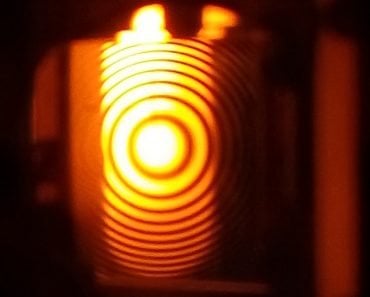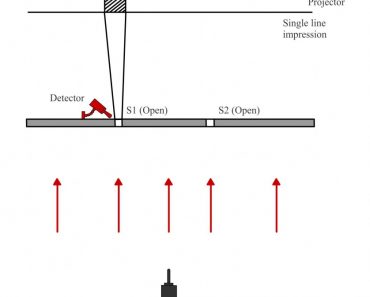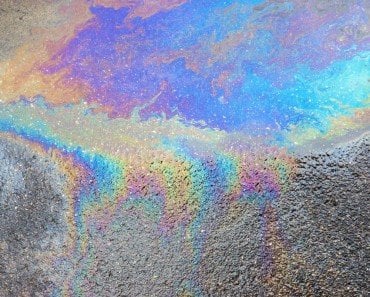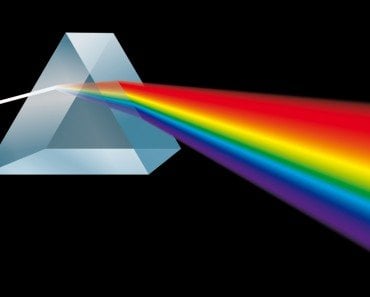Table of Contents (click to expand)
Interference of light is the phenomenon that occurs when two waves of light meet and the crest of one wave cancels out the trough of the other wave.
One of the fundamental properties of light is its ability to interfere with itself. Most people observe optical interferences on a daily basis, but don’t quite know how this phenomenon actually occurs. Some examples that people can relate to is a film of oil on water or a soap bubble that reflects a variety of beautiful colors when natural or artificial light is shone upon it. This dynamic interplay of colors derives from the simultaneous reflection of light from both the inside and outside surfaces of the bubble. The two surfaces are very close together (only a few microns thick) and light reflected from the inner surface interferes both constructively and destructively.
Recommended Video for you:
Principle Of Superposition
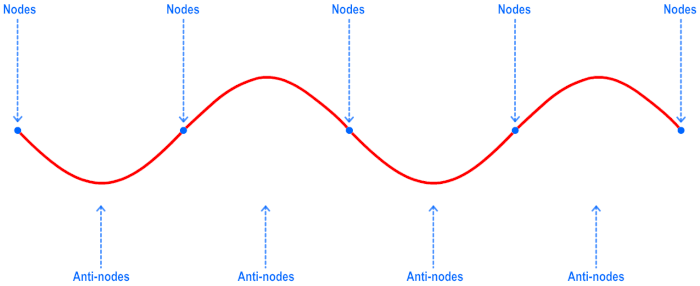
The superposition principle is one of those ideas that sounds much more complicated than it really is. Physics pans out like that sometimes. The superposition principle states that for linear systems, the net response caused by two or more inputs is the sum of the inputs that each would have caused on its own. Confused? Probably, so let’s simplify this a bit. In most cases, when people talk about the superposition principle, they’re talking about waves or sinusoidal vibrations in space and time. Examples of waves include light, sound, water ripples, and earthquake waves. All of these things work in the same basic way: If you take two waves and put them on top of each other (or superimpose them) they add together. This is what superposition is. Let’s get into some of the details of what that means in the real world.
When two waves are on top of each other, they combine to produce a total wave, which we call a resultant wave. We call it that because it’s the result you get when the waves are added up. Waves contain peaks and troughs that come in a pattern, one after another. When you superimpose the peaks of two waves, they add together to form an even bigger peak. When you superimpose the troughs of two waves, they add together to form an even bigger trough. This is called constructive interference. On the other hand, when you superimpose the peak of one wave with the trough of another, they add together and flatten out to nothing—a flat line. This is called destructive interference. It’s similar to how -6 + 6 = 0. The peak and trough cancel each other out.
Constructive & Destructive Interference
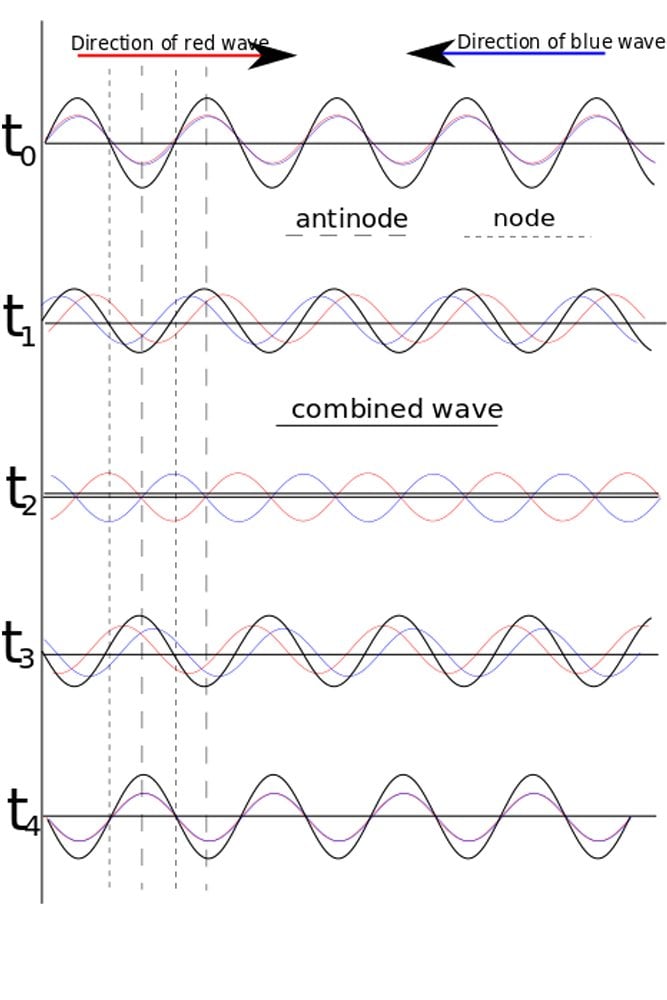
Most of the time, when we think about waves, we tend to imagine a single wave traveling through a medium. When we think about water waves, for example, we imagine a single wave traveling through the vastness of the ocean all by itself, but obviously, that’s unrealistic. Is there only one wave traveling through the entire ocean? Of course not! There are countless waves traveling in all directions. Some ocean waves are bigger and some are smaller. Some waves are caused by the wind, while others are caused by cruise ships, breaching whales and thousands of other things! Inevitably, some waves are going to cross over or meet with each other. When they do, the reaction between the waves is known as interference. This is the meeting of two or more waves traveling in the same medium. Waves meeting in the same medium actually disrupt each other’s displacement. They interfere with each other so that the resulting wave is a completely new and different wave from either of the original two.
Imagine that they’re traveling toward each other in the same medium. One is traveling left and the other is traveling right. They both have the same amplitude of 1 meter. When the two waves meet, there comes a moment when the crests of both waves end up in the same spot. Their crests overlap, so their amplitudes add together. Instead of the crest being 1-meter-tall, it’s now 2 meters tall! When the crests or troughs of two interfering waves meet, their amplitudes add together. This is constructive interference. So, what happens when the crest of one wave meets the trough of another wave? Well, the opposite happens, and it’s called destructive interference. When the crest and trough of two interfering waves meet, one amplitude subtracts from the other.
Let’s take the same two waves that we considered above. They’re still traveling toward each other and they are still 1 meter in amplitude each. However, this time, it just so happens that the crest of one wave lines up with the trough of the other wave. Do you know what will happen then to the overall amplitude? There won’t be any! The crest of the first wave will cancel out the trough of the second wave. The medium experiences zero displacement and the net result is a completely flat surface.



